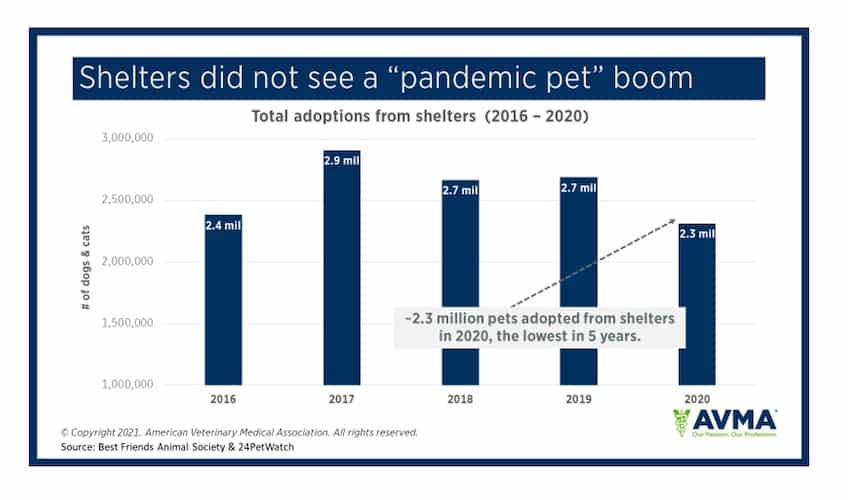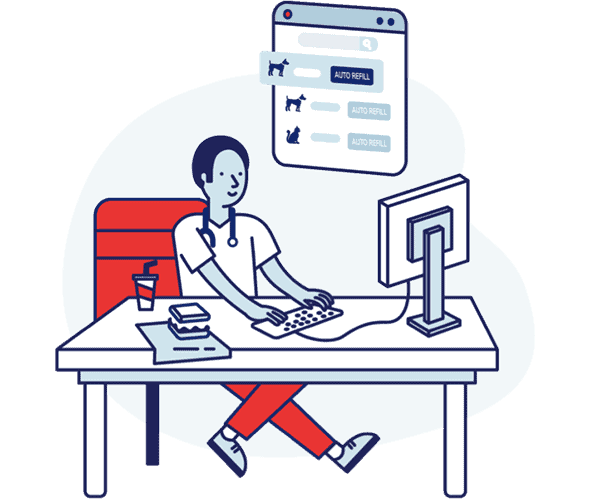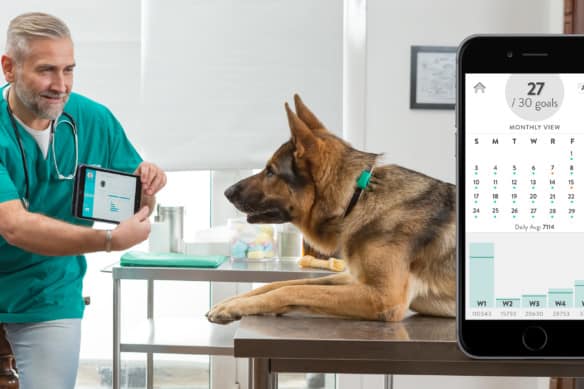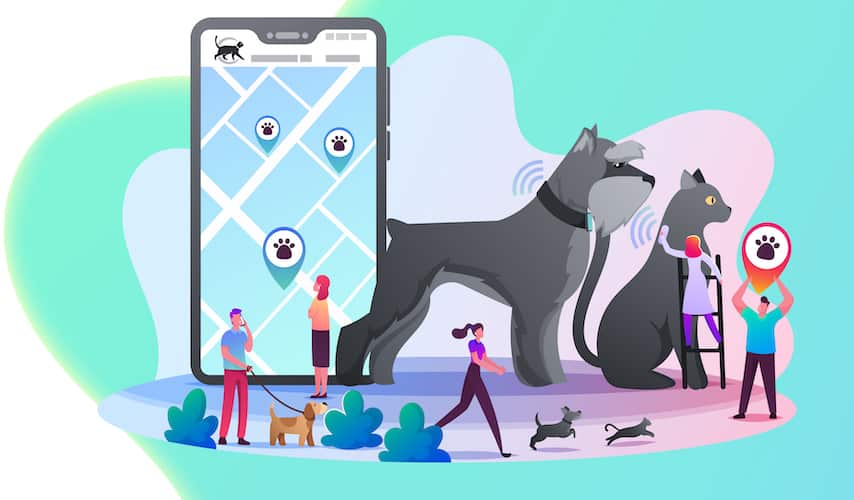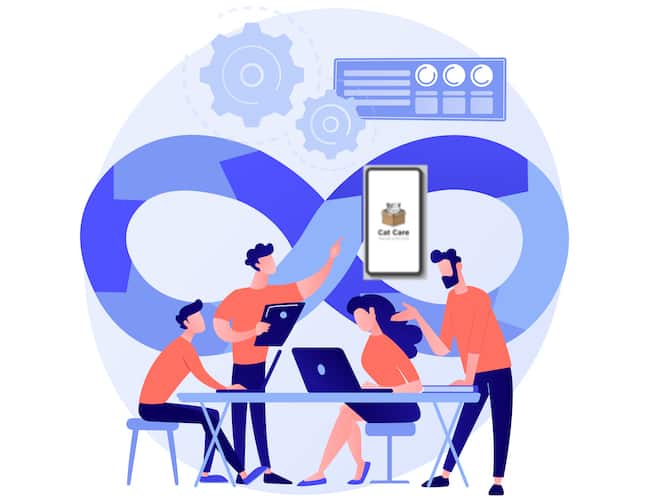If you feel like you’ve had enough of Dr. Google, never-ending stress at work, ridiculous staff turnover, and an ever-growing client backlog — I totally understand.
The last thing you want on this list is a marketer touting vet on demand app development that will miraculously solve the challenges you face daily.
However, if you spare me a moment, we’ll discuss how developing a veterinary mobile app can change your practice’s efficiency and make your customers happier.
If you’re ready to build a veterinary app, use this blog to check if you’re covering all the bases. Because software has a history of being hard and unpredictable, and you want to get the most out of this investment.
Top Takeaways:
- Never start with features. To build on-demand vet apps with really strong potential, start by identifying bottlenecks in your processes and add-on value you can offer to customers. Features will follow and can take many forms.
- The most lucrative directions for veterinary software seem to be IoT, AI/ML, chatbots, and AR/VR. These technologies can be applied practically in any area of a veterinary business.
- Ensure VCPR compliance is in place when developing a telemedicine-enabled vet application.
Table of Contents:
1. Veterinary Apps Market Overview
2. Why Create a Veterinary App?
3. Types and Examples of Veterinary Apps
4. Must-have Features of a Veterinary App
5. Advanced Features of a Veterinary App
6. 5 Steps of Veterinary App Development Process
- Step 1: Strategize
- Step 2: Pick a Team
- Step 3: Design and Prototype
- Step 4: Develop
- Step 5: Maintain
7. Regulations to Follow When You Create a Veterinary App
8. How Much Does it Cost to Create a Pet Care App?
Veterinary Apps Market Overview
Frankly speaking, the market is up for grabs. There’s no single vet care mobile app in the top 100 charts in the App Store, whether you’re swiping through the medical or health and fitness categories.
At the same time, such players as Airvet, an LA-based telemedicine startup, make quite a splash. The company raised $14m at the peak of pandemic in 2020 to continue developing its telehealth veterinary software.
According to American Veterinary Medical Association (AVMA), the revenue growth has been slowing down after it soared during the active phase of the COVID-19 pandemic:
However, on the bright side, CB Insights analysts expect the pet care market to reach $359b by 2027. With the future looking quite promising, it’s critical to understand where this growth will come from and how you can join by building a vet app.
Why Create a Veterinary App?
Nobody wants to make a veterinary app to amuse themselves, right? Businesses look at software as a means to solve the challenges they face.
I’ve discovered that many veterinary practices suffer from quick employee turnaround, specialists burning out, and not serving more patients. The mass media message during the pandemic was that people adopted lots of cats and dogs, got stimulus checks, and with everything shut down, decided to spend more on their furry friends.
However, if we look at data, pet adoption didn’t exactly skyrocket. In fact, fewer animals found new homes in 2020 compared to 2019.
Vets struggle to serve more patients because of the pandemic restrictions, allowing visits only in emergency cases. So how do you overcome that? You create a veterinary app to:
- increase the efficiency of operations overall
You can aim to streamline internal processes, educate personnel, simplify interactions with suppliers and other third parties, etc.
- serve more patients per hour
As your employees get access to apps that make their routine tasks easier or completely replace mundane work that doesn’t require human intervention, you should be able to serve more patients.
- offer more services
Like many of us, pet owners have had enough time during the COVID-19 pandemic to try out online shopping. Besides selling products and services related to animal care, you can also subscribe pet parents to educational services.
- better engage customers
Loyalty points and other gamification elements, e.g., allowing pet owners to accumulate bonuses for following routine procedures with their little friends, sending news and alerts — all of that helps veterinary practices keep in touch with their customers.
Ultimately, all of that leads to greater customer satisfaction and revenue growth when done right. And there’s plenty of choices to make in terms of which software helps your business adapt faster.
Types and Examples of Veterinary Apps
As you already understand, digitizing a veterinary business is not all about vet on demand mobile app development. Think of all the sides of your business that can get you the best ROI once optimized.
Customer-centric veterinary apps
When envisioning your unique app, please keep in mind that you can mix and match different options typically found in these types of applications listed below.
- On-demand veterinary medicine apps
The primary purpose of such applications is to offer on-demand veterinary services, including scheduling in-person visits, telemedicine, shopping, and everything else pet parents may find helpful. One of the challenges when you build an on-demand app is balancing the UX for two different user groups: pet parents and veterinarians.
- On-demand veterinary marketplaces
In a marketplace, customers can choose between different veterinarians and receive consultations. Think a TaskRabbit clone for finding a vet.
Related: On-Demand App Development: Everything You Need to Know
- Internet-of-things mobile software
From location-aware collars to automatic food dispensers, pet owners can choose from a variety of solutions based around a smart device controlled by a mobile application.
- Educational apps
Pet parents can benefit from knowing more about animals, their habits, etc. Such apps would typically include articles, videos, forums, and chatbots or telehealth consultations.
Related: Education App Development: Everything You Need to Know
Professional-centric veterinary apps
There are even more opportunities for those of you who want to build apps for vets specifically. Let’s review the software that can help veterinary professionals provide better services.
- Veterinary practice management software
Think CRM with billing, payments, patient scheduling, reports, analytics — everything a typical robust web application has to offer for streamlining business workflows.
- On-demand job boards
Same as customers looking for a vet based on their criteria, vet hospitals can set up marketplaces for finding veterinary technicians, assistants, and other personnel. Such software can simplify shift filling by a lot.
- Medical reference apps
There are many things vets need to keep track of when it comes to drugs, dosages, and other aspects of administering care to animals. An intuitive reference guide on a smartphone can easily carry all this information.
- Inventory management
Using IoT to track instruments, supplies, and everything else necessary for the normal operation of a veterinary clinic.
- Remote patient monitoring
This may sound a little fancy, but why not use connected devices that track animals’ blood pressure and other vitals and send the data to help veterinarians? Such a solution is a no-brainer for optimal care longevity and treatment plans.
Related: Remote Patient Monitoring App Development Guide
- Tablet-optimized apps for veterinary technicians
Imagine an app that records and transcribes all info during a patient triage. The app then sends all transcribed data to a practice management system, making it accessible for all staff members.
Please don’t treat these lists as exhaustive because there are too many ways to derive value from software for pet owners and veterinary professionals alike. For example, I haven’t mentioned social apps where users convene to help each other and have fun.
Veterinary apps need to be tailored to both pet owners and veterinarians, making custom mobile apps essential for success.
Ready to start a pet care app?
In an ideal world, you have the best features from all these types of apps working together as a single super-app or as separate mobile and web veterinary apps within a unified ecosystem.
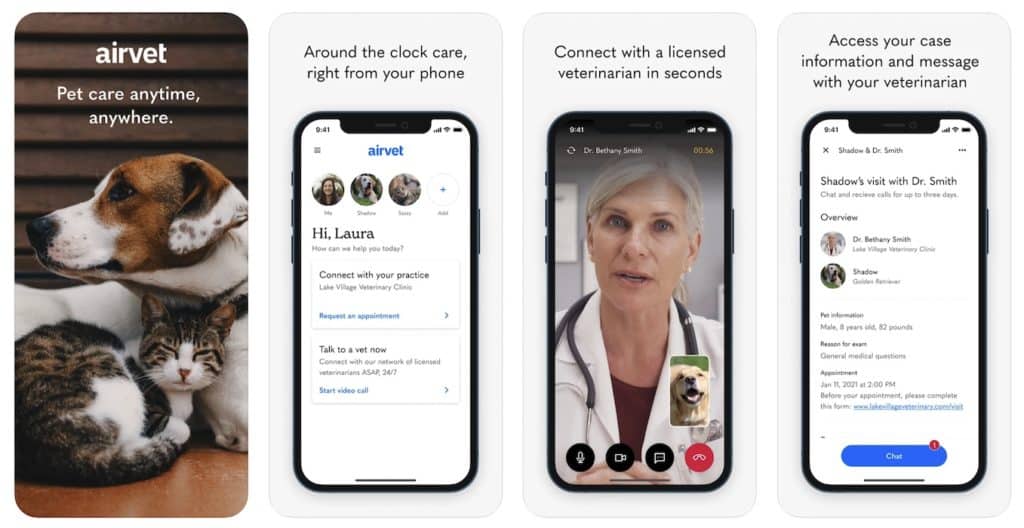
On the other hand, developing such a robust application may very well take a year and lots of resources before you start getting returns on investment. Keep reading to find out how you can develop a veterinary application in a timely fashion with a verified product-market fit.
Must-Have Features of a Custom Veterinary App
As I already mentioned, you don’t really need to focus on features. So I will list some general options just as an example to hopefully spark some ideas.
- telemedicine
- pets’ health records
- GPS tracking
- payments and a loyalty program
| Product idea: a location-aware collar that activates uncomfortable sensations when a pet approaches a prohibited territory indoors or outdoors. |
- chatbot (on a website / app)
- appointment scheduling
- push notifications, reminders
- educational articles and videos with recommendations
By the way, if you consider veterinary telemedicine app development — a collar with a cam can show you whatever your pet is currently doing, and it can transmit your voice and their sounds.
Related: Location Based Tracking App Development
Advanced Features of a Custom Veterinary App
You may also look into more cutting-edge technologies to make your petcare apps stand out. These options typically revolve around AI, VR/AR (virtual or augmented reality), IoT, etc.
- automated billing and coding
- drug/toxicity calculators
- medication refills
- e-commerce
- electronic signature
- handwriting recognition
- diagnoses based on imagery analysis
The list can go on and on. If you see something working for another industry, find out how you can apply that in your business model, e.g., to diagnose rare diseases.
Related: ML App Development: What, Why, How, When
5 Steps of Veterinary App Development Process
Let’s talk about the practical steps you need to take to build an on demand vet care app.
| Step | Description | Key Activities |
|---|---|---|
| Strategize | Define your app idea and research your target audience. |
|
| Pick a Team | Select an experienced Agile team to save time and resources. |
|
| Design and Prototype | Create a user-friendly prototype to verify ideas with test users. |
|
| Develop | Start coding, testing, and managing iterations in 2-week cycles. |
|
| Maintain | Launch the app and provide updates for mobile OS compatibility. |
|
Agile Disclaimer
At Topflight, we operate within the agile development framework. I strongly recommend that you pick a team practicing Agile if you want the most optimal output for your investment. Why is Agile so efficient, and how does it work?
When I first joined the IT crowd around 2005, most projects were fixed-price. Simply put, a development team and a client would agree on a fixed scope, budget, and delivery timeframe. However, before settling on requirements, analysts had to meticulously define all app features describing how they would work in the software to the minute detail, which obviously took a lot of time.
On the surface, this fixed-price approach doesn’t sound too scary, right? Define the scope to the full, sign on a budget, and wait for delivery. Unfortunately, that approach didn’t welcome any changes in the scope — all changes were possible only after finishing and releasing the current project.
Related: Agile App Development: Process, Advantages, and More
As a result, clients often ended up with products that nobody really needed or knew how to use. And so they had to kick off another fixed-price project, which couldn’t start until the scope had been fully defined.
Agile, in contrast, welcomes changes: its sole purpose is to release software with the optimal product-market fit as fast as possible. Agile didn’t appear because development agencies don’t want to commit to a fixed budget; it became popular as a means to release superior products.
How does Agile help you create a mobile vet app?
First of all, you get complete transparency into the development process. You know who exactly is working on what, how much time they put in, and whether there are any roadblocks, if any.
Second, you get to actively engage with the team to define the scope during pet care app development. Usually, Agile has a 2 or 3-week cadence, which means there’s an intermediary version of your software coming out every two weeks: you’re moving fast while remaining flexible.
You can involve test users to check if the UX is intuitive enough and pivot when there’s an opportunity to introduce new options or replace some functionality. Such an approach ensures the best product-market fit for when you’re ready for the public launch.
Agile naturally flows through all the development steps we’re going to discuss shortly, shortening the time to market and ensuring higher KPI for your business.
“Wait, don’t I get to decide on the overall budget and delivery timeframe before starting such an agile engagement?” Yes and no. In practice, every business approaching a software development project already envisions some funding and the desired release date.
An experienced agile team can assess what is feasible within this budget and timeframe. However, they would never sign on a fixed-price contract simply because they know that it takes a creative partnership to release a winning product.
Budget-wise, in Agile, you know how much you’re spending each month, and you see how your investment is taking shape right in front of you. In addition, you can mend this shape without delays if necessary. It’s like hiring a highly dedicated team with zero overheads.
Step 1: Strategize
Only you know the areas of your business that can benefit from developing a veterinary mobile app. Whether it’s going to be a client-focused or a professional-focused app, you need to define your idea and research the target audience:
- What KPIs am I trying to hit with this app?
- What are my customers’ needs?
- How does that benefit my business overall?
Step 2: Pick a Team
You can always hire your own developers. The only issue is that you’d also need to hire:
- Designers
- QA engineers
- Product manager
- Project manager (yes, they differ from product managers, and it’s not bureaucracy)
- DevOps engineers
- DevRel specialist (yes, devs quickly get bored these days, and they need a culture to keep cracking out flawless code)
The whole idea becomes a mess when you consider sick days, providing enough work for all team members (who otherwise may leave for a project with full-time positions), and keeping the team’s morale up. Needless to say, that’s a huge investment.
Therefore, picking an agile development team with enough resources, experience in the niche, and positive client references is a no-brainer.
Related: Hiring App Developers that help you build a winning app
Step 3: Design and Prototype
If you jump straight to vet on demand mobile app development, your idea may come out ugly and expensive. Instead, you should start with a prototype.
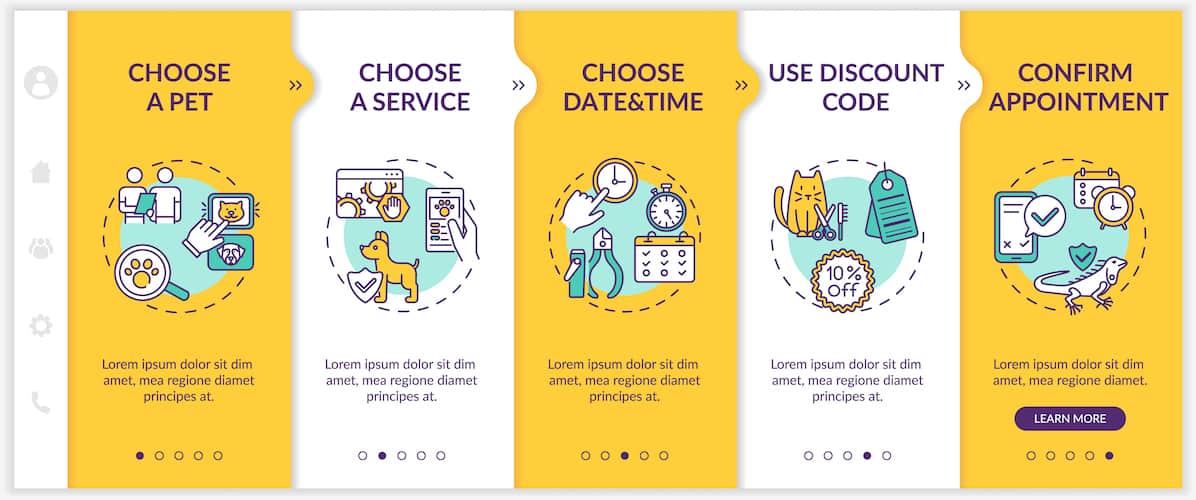
In the background, developers check the designs for technical feasibility and possible shortcuts if necessary. To clarify, a custom design can be costly to develop, while replacing or supplementing it with default OS features may save budget and get almost identical results. Here’s how we handle rapid prototyping at Topflight.
Step 4: Develop
Once the design is ready, building a veterinary doctor app can really begin. Together with a product manager, you decide on the features the team will work on, developers start putting code together, QA engineers start their quest for bugs, and a project manager oversees the whole process, making sure everybody remains productive to the max.
The cycle repeats every two weeks until you have a vet app for house pets that’s ready for the general public. One other thing happening in the background is a DevOps engineer setting up and monitoring the development environment so that developers spend max time coding and min time releasing the software.
Step 5: Maintain
Ok, let’s say you’re pretty happy with the latest app build. That means it’s time to release. You can do a slow roll-out relying on Google Play’s and the App Store’s beta testers or release the app straight into the wild.
Remember that the app will need timely updates to support new mobile OSs once launched. The same goes for servers running in the background and handling all in-app data.
In addition, if your development team has integrated Google Analytics or something similar during the development step, you can now monitor and analyze in-app user behavior, looking to optimize user journeys.
Regulations to Follow When You Create a Veterinary App
Although HIPAA compliance is not required, like when you develop a healthcare app, veterinary apps still need to comply with state laws. The confidentiality of veterinary care medical records is regulated in 33 states.
Related: HIPAA Compliance App Development: Everything You Need to Know
You should contact your state board of veterinary medicine to learn about local regulations. And if your app includes a telemedicine feature, you need to establish a Veterinarian-Client-Patient Relationship (VCPR) as defined in the applicable state’s veterinary practice act.
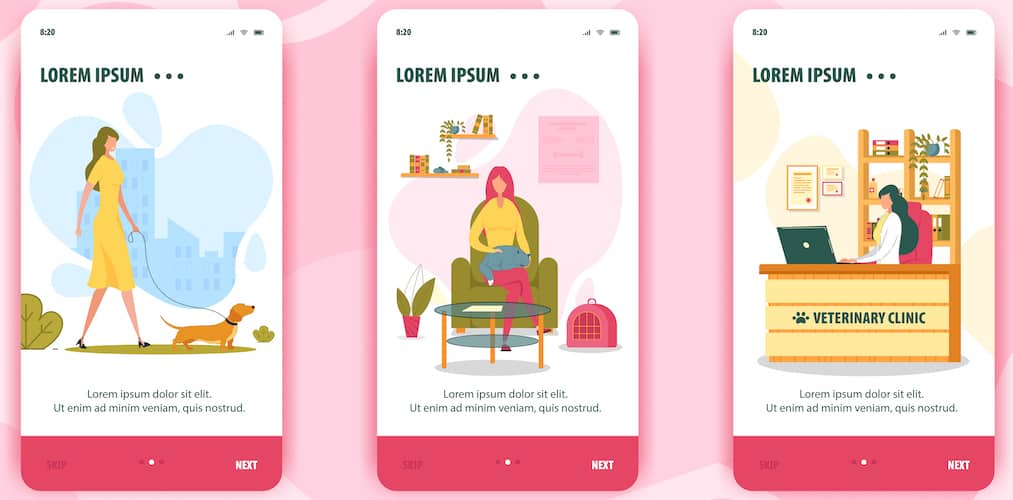
Anyways, pro healthcare app developers will cover this for you without extra hustle.
How Much Does it Cost to Create a Pet Care App?
From $60,000 to $140,000+ depending on complexity, with $60,000 leaning towards a minimalist version.
Schedule a call with our experts to discuss your vet app idea.
Related Articles:
- How to Build an on-demand application
- A Guide to Telehealth App Development
- Guide to Designing a Healthcare Application
- How to Start a Healthcare Startup
- Building Chatbots in Healthcare
- Doctor Appointment App Development Guide
[This blog was originally published on Dec 8, 2021 but has been updated for more recent content]
FAQ
Do I need HIPAA Compliance to create on demand veterinary mobile apps?
No, but there are other regulations. Check with your state board of veterinary medicine and establish a VCPR for remote telehealth consultations.
Are there any shortcuts to speed up development of veterinary software?
Use tools like React Native and Flutter for developing mobile apps for Android devices and iOS simultaneously; plus, you can reuse part of the code for a web application.
What can I do app-wise for some quick gains for my veterinary practice?
Automate appointment scheduling, get a chatbot to answer your customers’ questions.
Why are you guys expensive?
We put together talent and experience in design, development, product management, and app marketing, so you don’t have to double-spend, which means we’re actually less expensive in the long run. We’re wholeheartedly committed to your success.
How long does it take to create a mobile app for veterinary practice?
Between 6 and 9 months; 3-4 months for an MVP (minimal viable product).

